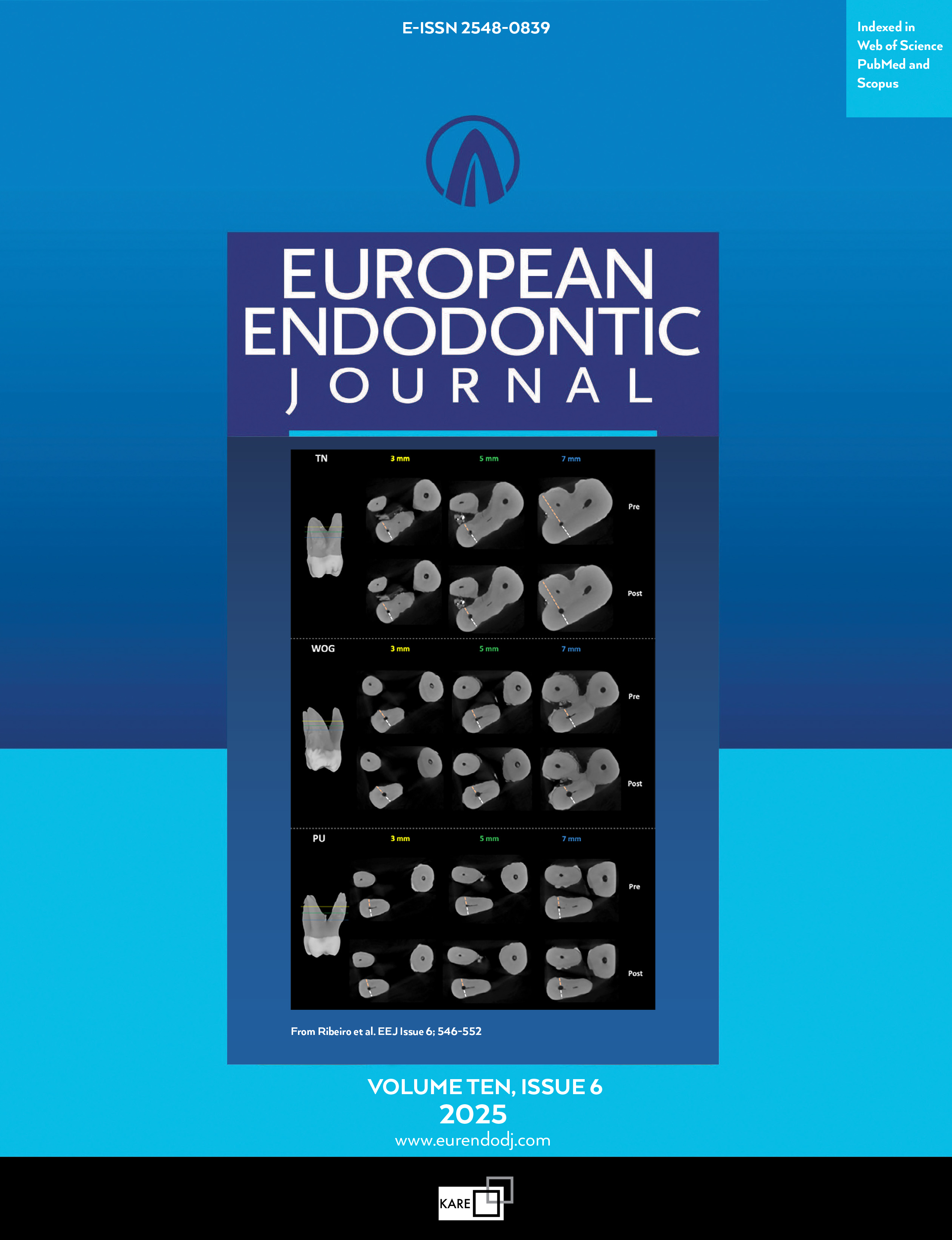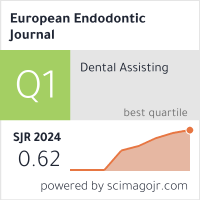Metrics
2024 IMPACT FACTOR
5 year Impact Factor
Eigenfactor Score
2024 CiteScore
Journal Citation Reports
(Clarivate 2025, JIF Rank)
Comparative Evaluation of Accuracy of Ipex, Root Zx Mini, and Epex Pro Apex Locators in Teeth with Artificially Created Root Perforations in Presence of Various Intracanal Irrigants
Sakshi Bilaiya, Pallav Patni, Pradeep Jain, Sanket Hans Pandey, Swadhin Raghuwanshi, Bhupesh BagulkarDepartment of Conservative Dentistry and Endodontics, Sri Aurobindo College of Dentistry, Indore, IndiaObjective: The study aimed to compare and evaluate the accuracy of iPex, Root ZX mini, and Epex Pro Electronic apex locators (EALs) in diagnosing root perforations in both dry and in different wet conditions: 5% sodium hypochlorite (NaOCl), 2% chlorhexidine (CHX), and 17% Ethylenediaminetetraacetic acid (EDTA).
Methods: Thirty extracted, human single rooted mandibular premolars were artificially perforated with a diameter of 1.5 mm in middle third of root. Actual canal lengths (ALs) in millimetre (mm) were evaluated for all teeth up to perforation location, and alginate mould were used to embed the teeth. After this, the electronic measurements were calculated by all EALs up to perforation site using a 20 K-file in both dry and wet canal conditions. Up to the perforation sites, the ALs were subtracted from the electronic length. Statistical analyses were done using One-way ANOVA with post hoc tukeys test for pairwise comparison and the level of significance was set at 0.05.
Results: All three EALs detected canal perforations which were clinically acceptable. There was significant difference for dry and wet conditions. Most accurate measurement were seen in dry canals for all three EALs. Root ZX mini in dry condition showed most accurate reading and there was a significant difference when compared with other groups. No significance difference was observed in iPex and Epex Pro Apex locator, and between NaOCl and CHX, CHX and EDTA.
Conclusion: Perforations were determined within a clinical acceptable range of 0.030.05 mm by all three EALs. Root ZX mini in dry canals gave most accurate measurement. The presence of irrigating solution influenced the accuracy of all the apex locators.
Keywords: Electronic apex locator, root perforations, root ZX mini, working length
Manuscript Language: English
(1776 downloaded)



